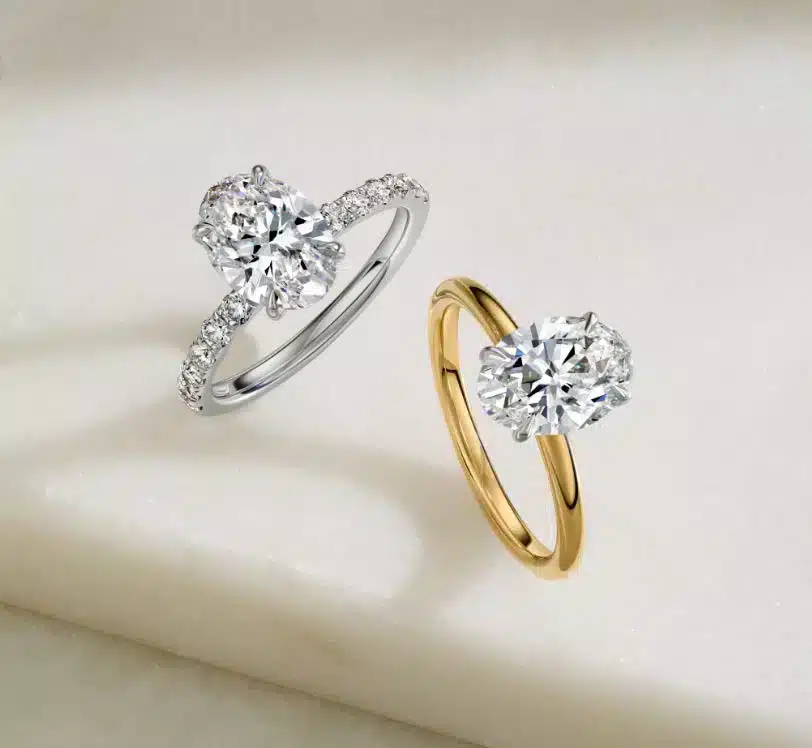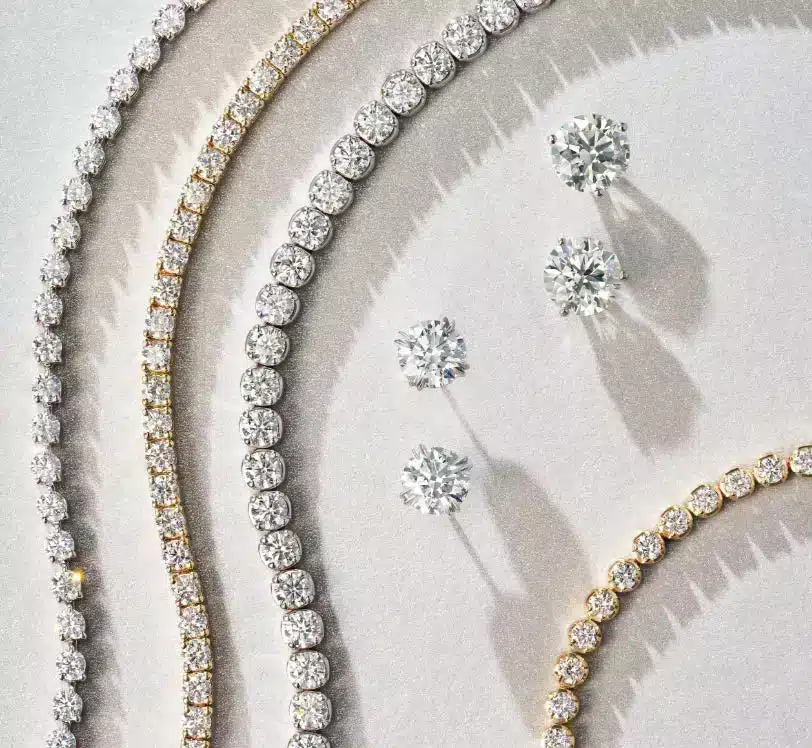Lab Grown Diamonds
Bercotts offers one of the best selections of ethical lab-grown diamonds in Glasgow. Whether you are looking for
an engagement ring, wedding ring or diamond jewellery, all of our lab-grown diamonds are individually selected
for exceptional quality and clarity.
Explore our vast collection of lab-diamonds at our Glasgow store, or shop online and enjoy free delivery
in tastefully discreet packaging.
View our Lab Grown Products
FAQs on Lab-Grown Diamonds
Lab-grown diamonds have surged in popularity over the last decade. They are an excellent, affordable alternative to
natural diamonds, matching their brilliance and sparkle while supporting more sustainable production methods.
Depending on the energy source used, lab-grown gemstones are considered eco-friendly diamonds.
These manmade diamonds usually produce a significantly lower carbon footprint than naturally mined ones.
Discover more details about these jewels in our answers to FAQs below .
What is a lab-grown diamond?
Lab-grown diamonds are created in a similar way to natural diamonds, only the process is sped up in a laboratory instead of in nature. This creates a diamond that is more affordable and eco-friendly.
Lab-created diamonds are also known as:
Eco diamonds
Synthetic diamonds
Man-made diamonds
Are lab-grown diamonds real diamonds?
The short answer is yes, lab-grown diamonds are physically, chemically and visually the same as natural diamonds.
When placed beside a similarly graded natural mined diamond, the stones will look identical.
The 3 major international diamond laboratories, GIA, HRD and IGI provide diamond grading reports certifying it is a diamond with the same optical, physical and chemical characteristics as mined diamonds. The point of origin is the main difference:
Lab diamonds are grown above ground in a controlled environment
Natural diamonds are extracted from the earth and formed under natural conditions
Why are lab-grown diamonds cheaper?
Compared with natural diamonds, lab-grown diamonds are very cost-effective and can be around 30% – 70% less expensive than similar natural stones. This means that you can get a larger or higher-quality gemstone for your budget.
Note: If you are wondering whether lab-grown diamonds are worth investing in or if they will hold their value, we suggest opting for a natural diamond. While lab diamonds are chemically and physically the same, they are not as rare and sought after as natural diamonds.
Can you tell if a diamond is lab-grown?
Yes, but it is extremely difficult to tell the difference between a natural and lab diamond. Visually, there is no way to tell the difference between stones, even to a trained eye. Traditional jewellers’ tools, such as microscopes or loupes, cannot distinguish the two.
However, advanced spectroscopic techniques, which examine how a diamond absorbs and emits light, are becoming more common. These and other specialised lab instruments can detect subtle growth features that reveal whether a diamond is natural or lab-grown.
For those shopping for lab-grown diamond jewellery, the most reliable way to tell the difference is through the diamond grading certification.
Do lab diamonds come certified?
Yes, 3 major international diamond laboratories provide diamond grading reports: GIA, HRD and IGI.
How are lab-grown diamonds graded?
Lab-grown diamonds are graded in the same way that natural diamonds are, with the 4 C’s:
Carat weight
Colour
Clarity
Cut
At Bercotts, all of our lab-grown diamonds come fully certified.
How are lab-grown diamonds made?
Diamonds can be grown in 2 ways: High Pressure-High Temperature (HPHT) and Chemical Vapour Deposition (CVD).
Both methods can create a beautiful, sparkling diamond that is optically, chemically and structurally identical to a mined diamond. You can’t tell the difference between a CVD and an HPHT diamond with the naked eye.
HPHT
HPHT is the original method of creating lab-grown diamonds, with gem-quality
Stones first introduced in the 1950s. This process can also enhance the colour of diamonds to make them colourless, pink, green, blue, or yellow.
HPHT diamond growth occurs in large pressure cookers called cubic presses, which can exert more than 70 metric tons of pressure.
The HPHT process is as follows:
Small diamond seeds are carefully placed into the bottom of a growth cell
A layer of carbon is delicately placed on top
The growth cell is placed inside the cubic press
Extreme conditions are applied of around 1,500°C and 1 million psi of pressure (approximately 70,000 times the pressure at sea level!)
Under these conditions, carbon melts and cools into our favourite form of carbon, a diamond crystal.
CVD
CVD is a newer, more controlled method for growing diamonds, using a vacuum chamber rather than high pressure.
The CVD process:
Flat diamond plates are placed into a vacuum chamber
The chamber is injected with a hydrocarbon gas such as methane
High-power microwave energy breaks down the gas
Free carbon rains down on the diamond plates, bonding layer by layer
The diamond grows vertically, much like tiny atom “snow” landing and crystallising
Growing diamonds is one of the most precise and technically demanding manufacturing processes in the world. Creating a gemstone-quality diamond larger than one carat has taken almost 60 years of research and development.
Can you visually tell the difference between lab-grown and natural diamonds?
The short answer is not with the naked eye, lab-grown diamonds are physically, chemically and visually the same as natural diamonds. You need specialised equipment to differentiate between the two.
When placed beside a similarly graded natural mined diamond, the stones will look identical. Lab-grown diamonds are often sold in higher colour grades, such as D-F.
Our Bespoke Lab-Grown Diamond Products

Always ethically sourced

More eco-friendly, sustainable option

Superior quality and purity

More affordable
Natural Diamonds vs Lab-Grown Diamonds
While lab-grown diamond rings are a good investment, natural diamonds are often seen as more valuable due to their rarity, making them a symbol of lasting value and authenticity.
This often leads to:
A higher resale value compared to lab-grown alternatives
An enduring perception of prestige and luxury
Additionally, because natural diamonds form over millions of years, each one has distinctive characteristics and inclusions, making every stone truly unique.
Ultimately, the choice between lab-grown and natural diamonds comes down to personal preference. At Bercotts, you can expect the same exceptional quality in craftsmanship and attention to detail, no matter which diamond you choose.
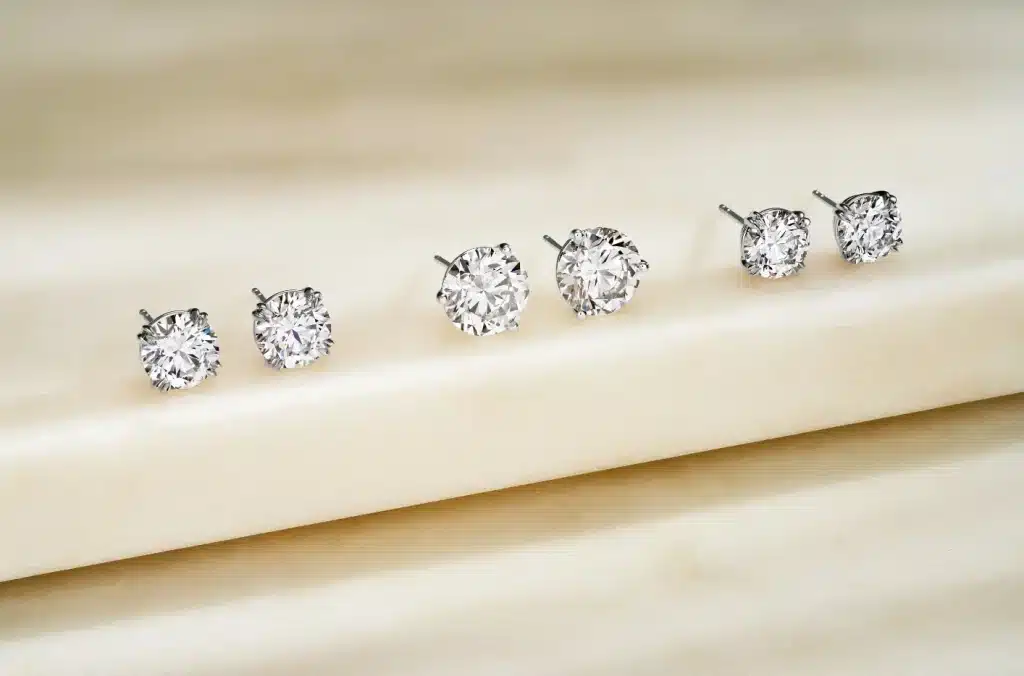

Bercotts: Trustworthy Jeweller for Lab-Created Diamonds
Established in 1904, Bercotts Jewellers has been at the forefront of many shifts in the diamond industry, most recently embracing lab-created diamonds.
No matter the type of stone, you can always be assured of personalised service and exceptional quality. Every piece reflects our commitment to excellence and timeless elegance.
Discover our range of lab-grown diamonds for sale in the UK available in different shapes and expertly cut for maximum brilliance.
What our customers say

I can tell they take great pride in their work and it is easily discernible in the jewellery they produce.
Rory Baker
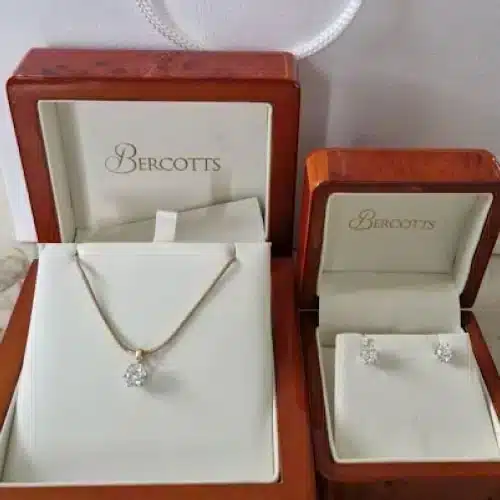
This was pivotal in me making my decision on my now wife’s engagement ring…
David Dugan
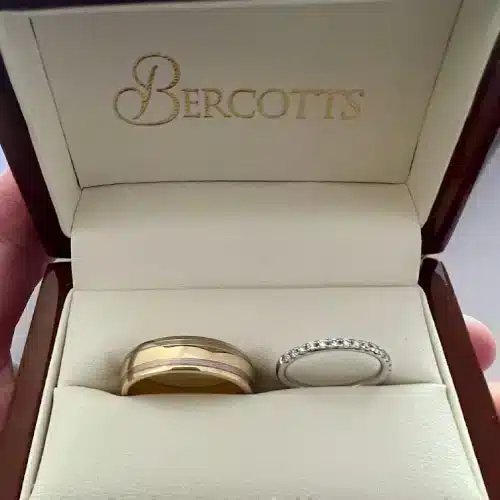
The fact it’s a family business makes it even better and so much more personal…
Lucy Jamieson








